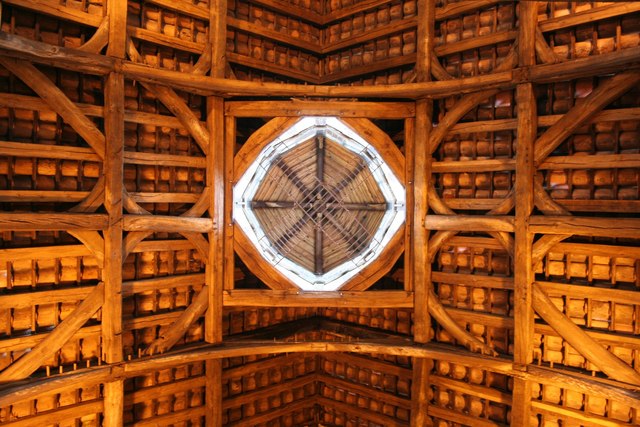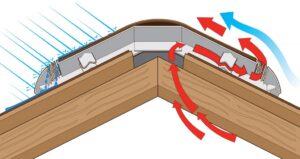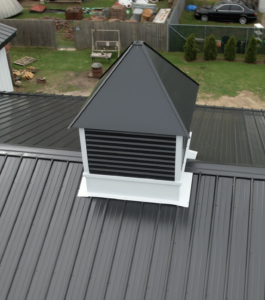
Do Cupolas actually help with airflow?
Cupolas enhance the aesthetic appeal of buildings.
Are you looking to add a unique touch of beauty and charm to your home or property? Cupolas are an ideal way to do just that! But before you install a cupola, it’s important to consider the various factors involved, such as cost, size requirements, height restrictions, ventilation…etc.
With the right knowledge and preparation, you can make sure your cupola installation is a success.
A Closer Look at Cupolas
First, you should know…
Cupolas are the small buildings that sit on top of the roof. They are designed to look like a miniature house and are available with windows or louvers. They are a popular architectural feature that have been used for centuries to enhance the aesthetic appeal of buildings. Additionally, cupolas add stateliness and a focal point to the buildings upon which they are placed.
Usually, cupolas or domes are there to enhance the aesthetic appeal of buildings. Most post-frame buildings only use them to enhance the looks of the roofline. However, in the past they were historically used practically to improve airflow within a building by allowing hot air to escape through their openings at the top while drawing in cooler air from outside. With modern eave and ridge venting methods, that function is not usually necessary, but the look remains timeless.
A thing of the past…
Louver cupolas have been often chosen to add or increase ventilation in a space, be it a garage, shed, or attic.
By allowing heat and moisture to escape, louver cupolas can help prevent the growth of mildew and mold, protecting stored items. They also allow fumes to escape and keep the air circulating, making a more comfortable work environment inside sheds and garages.
If a cupola is vented, it can be turbo-charged with a horizontal vent fan to pull hot stagnant air out of the roof, similar to a gable end vent fan.
Ridge Vents
One significant development in roofing technology has been the introduction of ridge vents, which have replaced the functional necessity of cupolas.
These vents offer an effective way to ventilate the air in homes, keeping them cool and attics dry. While ridge vents may not be suitable for all homes, they provide numerous advantages, making them worth considering.
Ridge vents are not always recommended for homes situated in areas with frequent heavy rainfall or extremely hot weather conditions, as these environments may require a mechanical roof ventilation system.
However, for the majority of homes, ridge vents offer improved airflow and energy efficiency, helping to reduce the cost of air conditioning.
Aside from their functional benefits, there are several reasons why ridge vents can be an appealing option for your home. Positioned at the peak of the roof, ridge vents provide a visually appealing, low-profile design that surpasses traditional vents in terms of aesthetics.
By replacing bulky box vents and turbine vents with ridge vents, homeowners can achieve a more stylish and high-performing roofing solution.
Moreover, ridge vents optimize rooftop ventilation by taking advantage of their elevated placement. As hot air rises and exits through the vent, cool air enters the roof to replace it, creating a continuous cycle of passive air circulation. By locating the exit ventilation at the roof’s highest point, ridge vents maximize the efficiency of this airflow process.
Compared to traditional passive ventilation systems like box vents, ridge vents offer distinct advantages. Box vents are more prone to issues such as rodent and insect infestation, as well as leaks under normal conditions. Their protruding metal structure creates a potential for rusting and leaks over time.
Additionally, box vents are more likely to accumulate debris, whereas the location and low profile of ridge vents allow them to shed leaves and debris more easily, resulting in simpler maintenance.
Considering their functional benefits, energy efficiency, and visual appeal, ridge vents are the choice for post-frame buildings. improving your home or barn ventilation system.
A Closer Look at Cupolas
Choosing a Cupola for Aesthetics
Whatever design you choose, a cupola instantly adds beauty and character to a roofline. They can enhance or highlight an architectural theme, or be used to form a cohesive look around your property by adding them to sheds, gazebos, detached garages, or other outbuildings.
What to Consider when installing Cupolas
When deciding which type of cupola is right for you, it is important to consider the size of space you have available for installation. Cupolas come in different sizes, so it is necessary to measure the space before purchasing one.
Design Your Post-Frame Barn or Garage With MilMar Buildings!
One rule of thumb is to make the cupola 1/10 to 1/8 the length of the ridge it sits on, but on a larger building a cupola that size would be ridiculously large, so a large building will require more than one.
At MilMar, we have a variety of options to fit your style and look to match your building. You can give your post-frame building a regal touch up, by installing one of our cupolas that are designed to last the test of time!
MilMar Buildings is more than capable of assisting you with your post-frame building project. Speak with our experts today!
If you have any additional inquiries that haven’t been addressed in this article, please don’t hesitate to reach out. For assistance with designing and planning your project, you can contact MilMar Buildings at 260-440-3190 or send us an email by clicking here. Our dedicated Customer Engagement Team will be happy to assist you in determining the next steps for your project.
Written by Shane Ferris
Shane is a graduate from Master’s Baptist College out of North Dakota. As a video production specialist, Shane has been involved in business marketing and advertising since 2018. In addition to his professional pursuits, Shane actively participates in his local church and takes pleasure in engaging in various church activities. Several times each year, he embarks on trips to different countries to provide aid to charitable organizations and non-profits. To promote and encourage involvement, Shane employs his video and photography expertise, offering these services to his clients and non-profits alike. At MilMar Buildings Shane is a part of the marketing team implementing strategies for social media content and growth.




